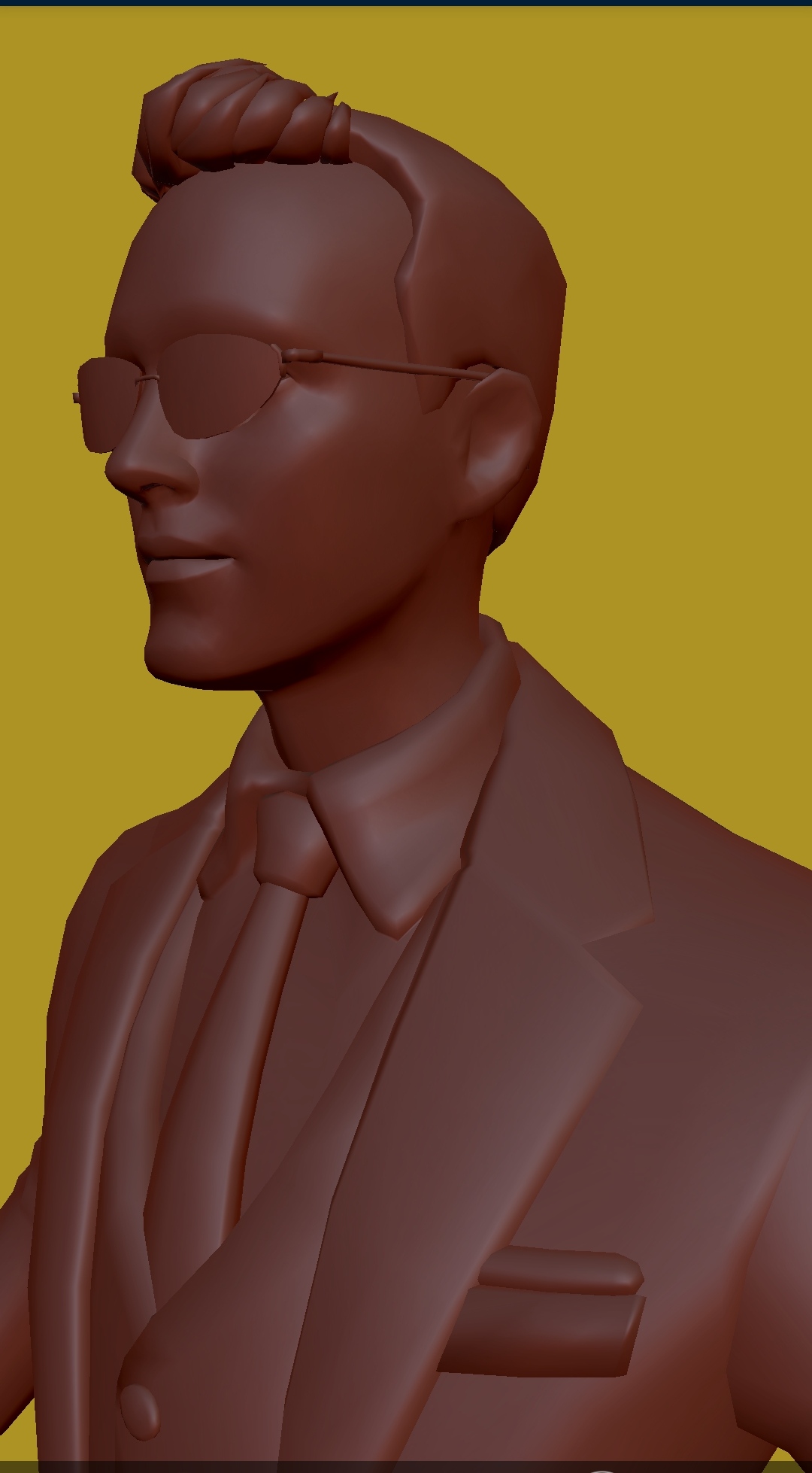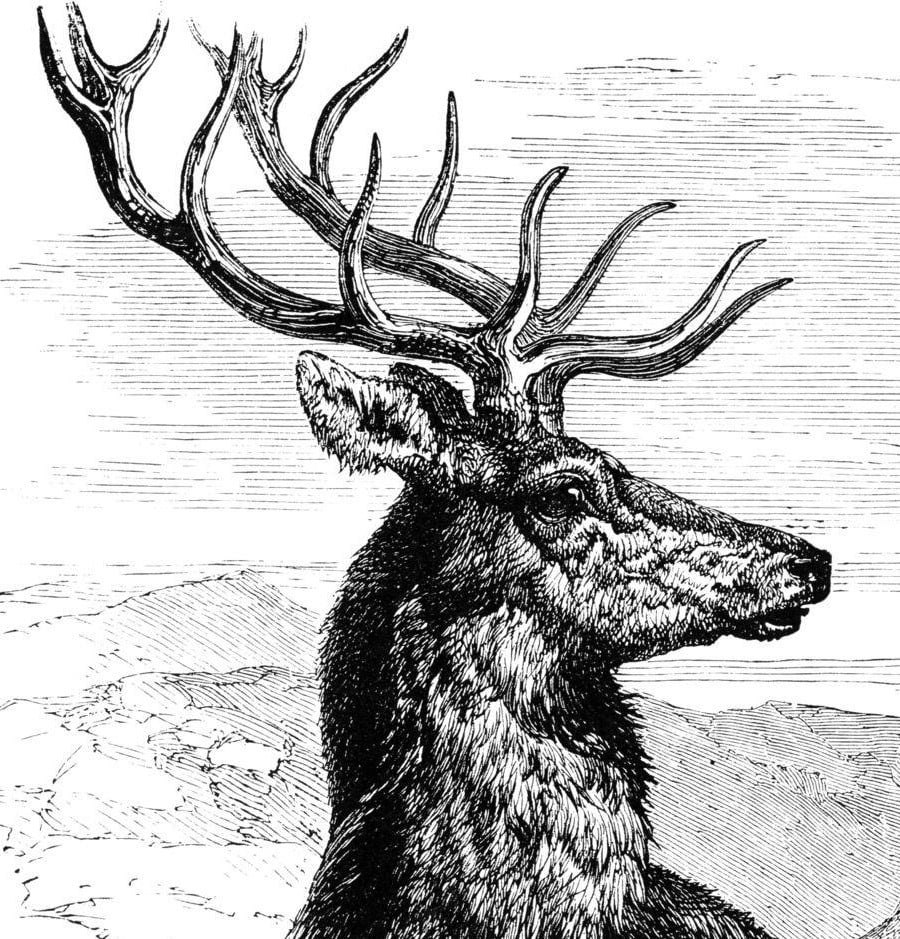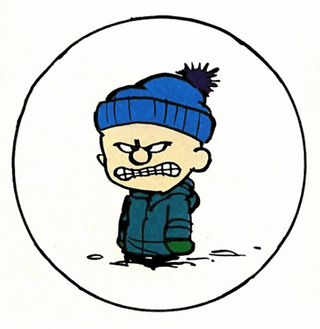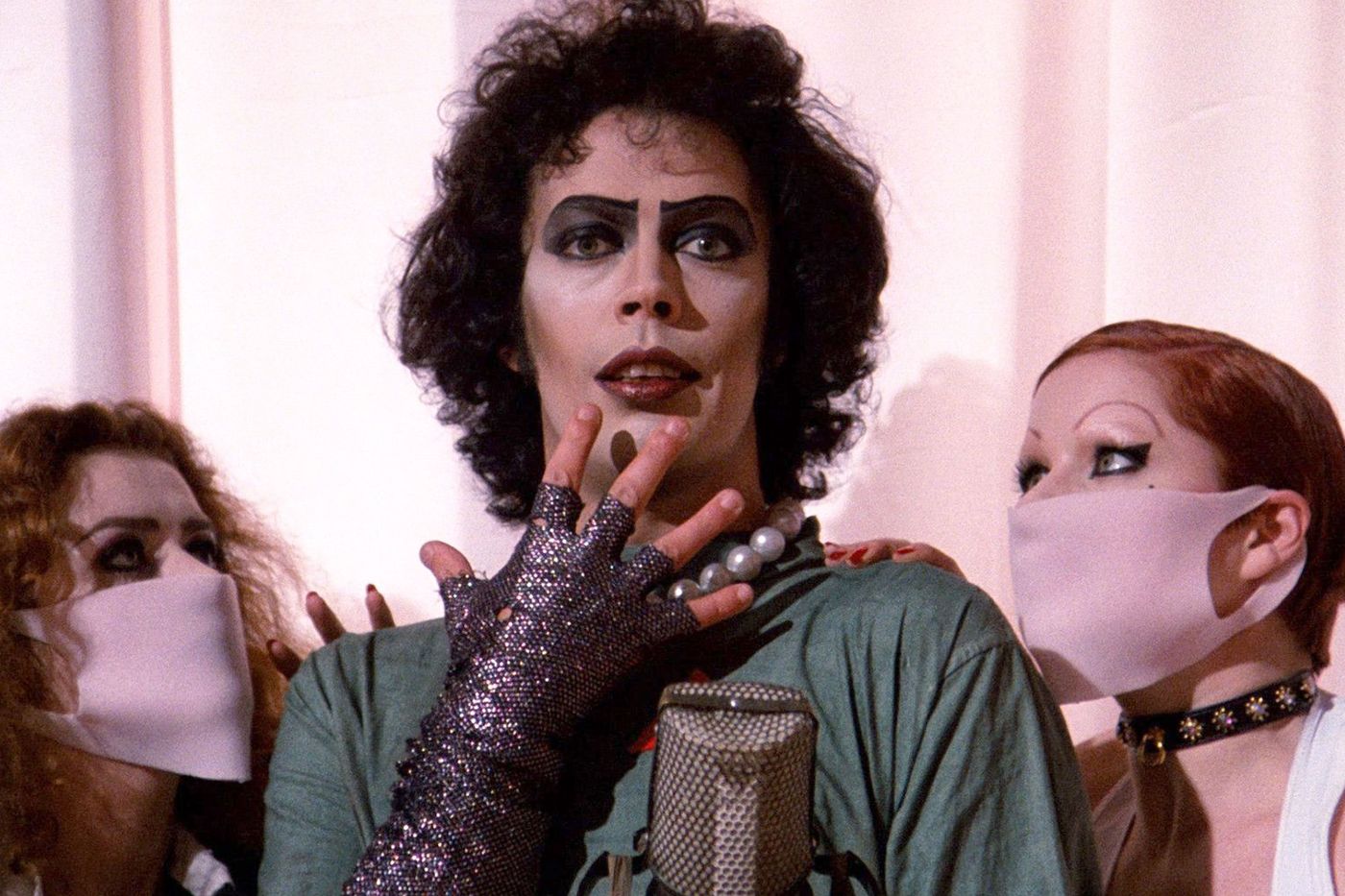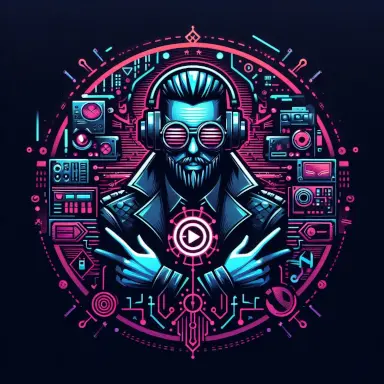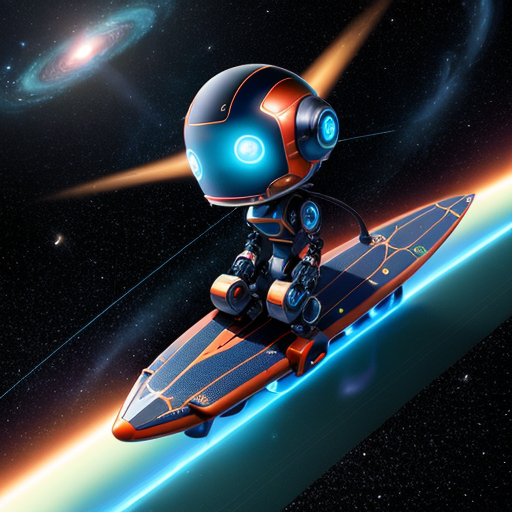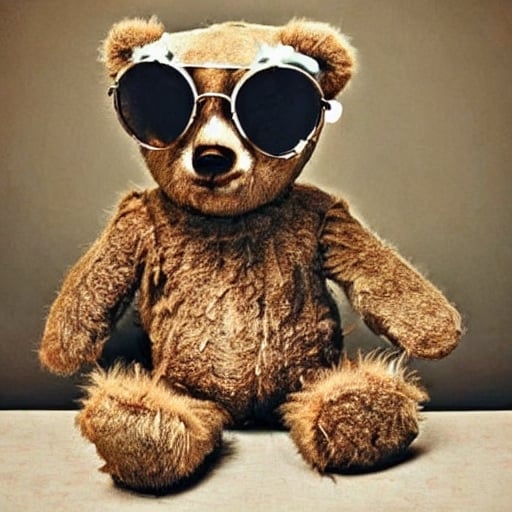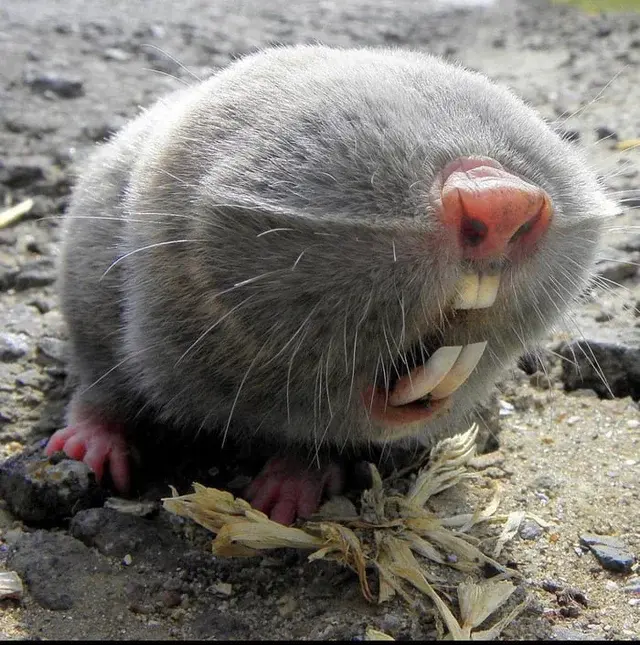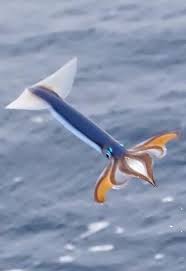We Asked A.I. to Create the Joker. It Generated a Copyrighted Image.::Artists and researchers are exposing copyrighted material hidden within A.I. tools, raising fresh legal questions.
We asked A.I. to create a copyrighted image from the Joker movie. It generated a copyrighted image as expected.
Ftfy
What it proves is that they are feeding entire movies into the training data. It is excellent evidence for when WB and Disney decides to sue the shit out of them.
Does it really have to be entire movies when theres a ton of promotional images and memes with similar images?
Promotional images are still under copyright.
We should find all the memers and throw them in jail.
Will someone think of the shareholders!?
Yes. Thats what these things are, extremely large catalogues of data. As much data as possible is their goal.
True but it didn’t pick some random frame somewhere in the movie it chose a extremely memorable shot that is posted all over the place. I won’t deny that they are probably feeding it movies but this is not a sign of that.
This image is literally the top result on Google images for me.
Why would it pick some random frame in the middle of its data set instead of a frame it has the most to reference. It can still use all those other frames to then pick the frame if has the most references to.
But im starting to think maybe i misunderstood the comment i replied to.
Sorry, im way out of context with my reply, totally my fault for reflexively replying.
Uhhh would you accept i didnt have my coffee yet and hadnt got out of bed yet as an explanation?
Haha it happens
I think it’s much more likely whatever scraping they used to get the training data snatched a screenshot of the movie some random internet user posted somewhere. (To confirm, I typed “joaquin phoenix joker” into Google and this very image was very high up in the image results) And of course not only this one but many many more too.
Now I’m not saying scraping copyrighted material is morally right either, but I’d doubt they’d just feed an entire movie frame by frame (or randomly spaced screenshots from throughout a movie), especially because it would make generating good labels for each frame very difficult.
I just googled “what does joker look like” and it was the fourth hit on image search.
Well, it was actually an article (unrelated to AI) that used the image.
But then I went simpler – googling “joker” gives you the image (from the IMDb page) as the second hit.
WB and Disney would lose, at least without an amendment to copyright law. That in fact just happened in one court case. It was ruled that using a copyrighted work to train AI does not violate that works copyright.
Using it to train on is very different from distributing derived works.
What do you think the trained model is other than a derived work?
Something transformative from the original works. And arguably not being being distributed. The model producing and distributing derivative works is entirely different though. No one really gives a shit about data being used to train models - there’s nothing infringing about that which is exactly why they won their case. The example in the post is an entirely different situation though.
The way it was done if I remember correctly is that someone found out v6 was trained partially with Stockbase images-caption pairs, so they went to Stockbase and found some images and used those exact tags in the prompts.

I have that exact same .jpeg stored on my computer and I don’t even know where it came from. I don’t even watch superhero films
And if you tried to sell that, you would be breaking the law.
Which is what these AI models are doing
They’re not selling it though, they’re selling a machine with which you could commit copyright infringement. Like my PC, my HDD, my VCR…
No, they are selling you time in a digital room with a machine, and all of the things it spits out at you.
You dont own the program generating these images. You are buying these images and the time to tinker with the AI interface.
I’m not buying anything, most AI is free as in free beer and open source e.g. Stable Diffusion, Mistral…
Unlike hardware it’s actually accessible to everyone with sufficient know-how.
Youre pretty young, huh. When something on the internet from a big company is free, youre the product.
Youre bug and stress testing their hardware, and giving them free advertising. While using the cheapest, lowest quality version that exists, and only for as long as they need the free QA.
The real AI, and the actual quality outputs, cost money. And once they are confident in their server stability, the scraps youre picking over will get a price tag too.
Voyager just loaded a copyrighted image on my phone. Guess someone’s gonna have to sue them too.
Yeah man, Voyager is making millions with the images on the app. It makes me so mad, they Voyager people make you think they are generating content on their own, but in reality is just feeding you unlicensed content from others.
You’re completely missing the point. Making money doesn’t change the legality. YouTube was threatened by the RIAA before they even started showing ads. Displaying an image from a copyrighted work on an AI platform is not much different technologically than Voyager or even Google Images displaying the same image, and both could also be interpreted as “feeding you unlicensed content from others.”
Making money doesn’t change the legality.
Except that it actually does? That’s the point of copyright laws. The LLM/AIs are using copyright protected material as source without paying for it, and then selling it’s output as "original '.
Oh! That’s why torrent sites aren’t under constant threat despite hosting tons of free copyright material.
Hang on… Yes they are!
I just remembered a copyrighted image. Oops.
Hey, I bet there were complaints about Google showing image results at some point too! Lol
Wow, voyager app is very nice!
When they asked for an Italian video game character it returned something with unmistakable resemblance to Mario with other Nintendo property like Luigi, Toad etc. … so you don’t even have to ask for a “screencapture” directly for it to use things that are clearly based on copyrighted characters.
you’re still asking for a character from a video game, which implies copyrighted material. write the same thing in google and take a look at the images. you get what you ask for.
you can’t, obviously, use any image of Mario for anything outside fair use, no matter if AI generated or you got it from the internet.
Also ask literally any human and they’ll probably name Mario first. Not just top 10, number 1.
But the AI didn’t credit the clear inspiration. That’s the problem, that is what makes it theft: you need permission to profit off of the works of others.
you need permission to profit off of the works of others.
but that’s exactly what I said. you can’t grab an image of Mario from google and profit from it as you can’t draw a fan art of Mario and profit from it as well as you can’t generate an image of Mario and profit from it.
It doesn’t matter if you’re generating it with software or painting it on canvas, if it contains intellectual property of others, you can’t (legally) use it for profit.
however, generating it and posting it as a meme on the internet falls under fair use, just like using original art and making a meme.
The users are allowed to ask for those things
The AI company should not be allowed to give it in return for monetary gain.
If you asked me to draw an Italian video game character, I’d draw Mario too. Why can’t an AI make copyrighted character inspired pics as long as they aren’t being sold?
You credited it just now as Mario, a Nintendo property, which the AI failed to do. Plus, if you were paid to draw Mario then you’d have broken laws about IP. Why don’t those same rules apply to AI?
Well that’s exactly the problem. If people use AI generated images for commercial purposes they may accidentally infringe on someone else’s copyright. Since AI models are a black box there isn’t really a good way to avoid this.
Sure there is, force the AI to properly credit artists and if they don’t have permission to use the character then the prompt fails. Or the AI operators have no legal rights to charge for services and should be sued into the ground.
They literally asked it to give them a screenshot from the Joker movie. That was their fucking prompt. It’s not like they just said “draw Joker” and it spit out a screenshot from the movie, they had to work really hard to get that exact image.
Because this proves that the “AI”, at some level, is storing the data of the Joker movie screenshot somewhere inside of its training set.
Likely because the “AI” was trained upon this image at some point. This has repercussions with regards to copyright law. It means the training set contains copyrighted data and the use of said training set could be argued as piracy.
Legal discussions on how to talk about generative-AI are only happening now, now that people can experiment with the technology. But its not like our laws have changed, copyright infringement is copyright infringement. If the training data is obviously copyright infringement, then the data must be retrained in a more appropriate manner.
But where is the infringement?
This NYT article includes the same several copyrighted images and they surely haven’t paid any license. It’s obviously fair use in both cases and NYT’s claim that “it might not be fair use” is just ridiculous.
Worse, the NYT also includes exact copies of the images, while the AI ones are just very close to the original. That’s like the difference between uploading a video of yourself playing a Taylor Swift cover and actually uploading one of Taylor Swift’s own music videos to YouTube.
Even worse the NYT intentionally distributed the copyrighted images, while Midjourney did so unintentionally and specifically states it’s a breach of their terms of service. Your account might be banned if you’re caught using these prompts.
You do realize that newspapers do typically pay the licensing for images, it’s how things like Getty images exist.
On the flip side, OpenAI (and other companies) are charging someone access to their model, which is then returning copyrighted images without paying the original creator.
That’s why situations like this keep getting talked about, you have a 3rd party charging people for copyrighted materials. We can argue that it’s a tool, so you aren’t really “selling” copyrighted data, but that’s the issue that is generally be discussed in these kinds of articles/court cases.
Mostly playing devil’s advocate here (since I don’t think ai should be used commercially), but I’m actually curious about this, since I work in media… You can get away using images or footage for free if it falls under editorial or educational purposes. I know this can vary from place to place, but with a lot of online news sites now charging people to view their content, they could potentially be seen as making money off of copyrighted material, couldn’t they?
It’s not a topic that I’m super well versed in, but here is a thread from a photography forum indicating that news organizations can’t take advantage of fair use https://www.dpreview.com/forums/thread/4183940.
I think these kinds of stringent rules are why so many are up in arms about how AI is being used. It’s effectively a way for big players to circumvent paying the people who out all the work into the art/music/voice acting/etc. The models would be nothing without the copyrighted material, yet no one seems to want to pay those people.
It gets more interesting when you realize that long term we still need people creating lots of content if we want these models to be able to create things around concepts that don’t yet exist (new characters, genres of music, etc.)
But where is the infringement?
Do Training weights have the data? Are the servers copying said data on a mass scale, in a way that the original copyrighters don’t want or can’t control?
Data is not copyrighted, only the image is. Furthermore you can not copyright a number, even though you could use a sufficiently large number to completely represent a specific image. There’s also the fact that copyright does not protect possession of works, only distribution of them. If I obtained a copyrighted work no matter the means chosen to do so, I’ve committed no crime so long as I don’t duplicate that work. This gets into a legal grey area around computers and the fundamental way they work, but it was already kind of fuzzy if you really think about it anyway. Does viewing a copyrighted image violate copyright? The visual data of that image has been copied into your brain. You have the memory of that image. If you have the talent you could even reproduce that copyrighted work so clearly a copy of it exists in your brain.
only distribution of them.
Yeah. And the hard drives and networks that pass Midjourney’s network weights around?
That’s distribution. Did Midjourney obtain a license from the artists to allow large numbers of “Joker” copyrighted data to be copied on a ton of servers in their data-center so that Midjourney can run? They’re clearly letting the public use this data.
Because they’re not copying around images of Joker, they’re copying around a work derived from many many things including images of Joker. Copying a derived work does not violate the copyright of the work it was derived from. The wrinkle in this case is that you can extract something very similar to the original works back out of the derived work after the fact. It would be like if you could bake a cake, pass it around, and then down the line pull a whole egg back out of it. Maybe not the exact egg you started with, but one very similar to it. This is a situation completely unlike anything that’s come before it which is why it’s not actually covered by copyright. New laws will need to be drafted (or at a bare minimum legal judgements made) to decide how exactly this situation should be handled.
Someone already downvoted you but this is exactly the topic of debate surrounding this issue.
Other recognized fair-use exemptions have similar interpretations: a computer model analyzes a large corpus of copyrighted work for the purposes of being able to search their contents and retrieve relevant snippets and works based on semantic and abstract similarities. The computer model that is the representation of those works for that purpose is fair use: it contains only factual information about those works. It doesn’t matter if the works used for that model were unlicensed: the model is considered fair use.
AI models operate by a very similar method, albeit one with a lot more complexity. But the model doesn’t contain copyrighted works, it is only itself a collection of factual information about the copyrighted works. The novel part of this case is that it can be used to re-construct expressions very similar to the original (it should be pointed out that the fidelity is often very low, and the more detailed the output the less like the original it becomes). It isn’t settled yet if that fact changes this interpretation, but regardless I think copyright is already not the right avenue to pursue, if the goal is to remediate or prevent harm to creators and encourage novel expressions.
derived
https://www.law.cornell.edu/wex/derivative_work
Copyrights allow their owners to decide how their works can be used, including creating new derivative works off of the original product. Derivative works can be created with the permission of the copyright owner or from works in the public domain. In order to receive copyright protection, a derivative work must add a sufficient amount of change to the original work.
Are you just making shit up?
Do Training weights have the data?
The answer to that question is extensively documented by thousands of research papers - it’s not up for debate.
If someone wants to read one of those papers, I can recommend Extracting Training Data from Diffusion Models. It shouldn’t be too hard for someone with little experience in the field to be able to follow along.
There response well be we don’t know we can’t understand what its doing.
There response well be we don’t know we can’t understand what its doing.
What the fuck is this kind of response? Its just a fucking neural network running on GPUs with convolutional kernels. For fucks sake, turn on your damn brain.
Generative AI is actually one of the easier subjects to comprehend here. Its just calculus. Use of derivatives to backpropagate weights in such a way that minimizes error. Lather-rinse-repeat for a billion iterations on a mass of GPUs (ie: 20 TFlop compute systems) for several weeks.
Come on, this stuff is well understood by Comp. Sci by now. Not only 20 years ago when I learned about this stuff, but today now that AI is all hype, more and more people are understanding the basics.
Understanding the math behind it doesn’t immediately mean understanding the decision progress during forward propagation. Of course you can mathematically follow it, but you’re quickly gonna lose the overview with that many weights. There’s a reason XAI is an entire subfield in Machine Learning.
Understanding the math behind it doesn’t immediately mean understanding the decision progress during forward propagation.
Ummm… its lossy compressed data from the training set.
Is it a perfect copy? No. But copyright law covers “derivative data” so whatever, the law remains clear on this situation.
Bro who even knows calculus anymore we have calculators for a reason 🤷♀️
Because this proves that the “AI”, at some level, is storing the data of the Joker movie
I don’t think that’s a justified conclusion.
If I watched a movie, and you asked me to reproduce a simple scene from it, then I could do that if I remembered the character design, angle, framing, etc. None of this would require storing the image, only remembering the visual meaning of it and how to represent that with the tools at my disposal.
If I reproduced it that closely (or even not-nearly-that-closely), then yes, my work would be considered a copyright violation. I would not be able to publish and profit off of it. But that’s on me, not on whoever made the tools I used. The violation is in the result, not the tools.
The problem with these claims is that they are shifting the responsibility for copyright violation off of the people creating the art, and onto the people making the tools used to create the art. I could make the same image in Photoshop; are they going after Adobe, too? Of course not. You can make copyright-violating work in any medium, with any tools. Midjourney is a tool with enough flexibility to create almost any image you can imagine, just like Photoshop.
Does it really matter if it takes a few minutes instead of hours?
AIs are not humans my dude. I don’t know why people keep using this argument. They specifically designed this thing to scrape copyrighted material, it’s not like an artist who was just inspired by something.
Photoshop is not human. AutoTune is not human. Cameras are not human. Microphones are not human. Paintbrushes are not human. Etc.
AI did not create this. A HUMAN created this with AI. The human is responsible for the creating it. The human is responsible for publishing it.
Please stop anthropomorphizing AI!
It isn’t human, but that IS how it works.
It’s analyzing material and extracting data about it, not compiling the data itself. In much the same way TDM (textual data mining) analyzes text and extracts information about it for the purposes of search and classification, or sentiment analysis, ECT, an “AI” model analyses material and extracts information on how to construct new language or visual media that relates to text prompts.
It’s important to understand this because it’s core to the fair use defence getting claimed. The models are derived from copyrighted works, but they aren’t themselves infringing. There is precedent for similar cases being fair use.
I’ve had this discussion before, but that’s not how copyright exceptions work.
Right or wrong (it hasn’t been litigated yet), AI models are being claimed as fair use exceptions to the use of copyrighted material. Similar to other fair uses, the argument goes something like:
“The AI model is simply a digital representation of facts gleamed from the analysis of copyrighted works, and since factual data cannot be copyrighted (e.g. a description of the Mona Lisa vs the painting itself), the model itself is fair use”
I think it’ll boil down to whether the models can be easily used as replacements to the works being claimed, and honestly I think that’ll fail. That the models are quite good at reconstructing common expressions of copyrighted work is novel to the case law, though, and worthy of investigation.
But as someone who thinks ownership of expressions is bullshit anyway, I tend to think copyright is not the right way to go about penalizing or preventing the harm caused by the technology.
“The AI model is simply a digital representation of facts gleamed from the analysis of copyrighted works, and since factual data cannot be copyrighted (e.g. a description of the Mona Lisa vs the painting itself), the model itself is fair use”
So selling fan fiction and fan-made game continuations and modifications should be legal?
Not the OP, but yes it absolutely should. The idea you can legaly block someones creative expression because they are using elements of culture you have obtained a monopoly of is obscene.
I know it should. Only then we’d have no IP remaining. As it should be, the only case where it’s valid is punishing somebody impersonating the author or falsely claiming authorship, and that’s frankly just fraud.
It should, but also that is significantly different from what an AI model is.
It would be more like a list of facts and information about the structure of another work, and facts and patterns about lots of other similar works; and that list of facts can easily be used to create other, very similar works, but also it can be used to create entirely new works that follow patters from the other works.
In as much as the model can be used to create infringing works -but is not one itself- makes this similar to other cases where a platform or tool can be used in infringing ways. In such cases, if the platform or tool is responsible for reasonable protections from such uses, then they aren’t held liable themselves. Think Youtube DMCA, Facebook content moderation, or even Google Books search. I think this is likely the way this goes; there is just too strong a case (with precedent) that the model is fair use.
Copyright law is the right tool, but the companies are chasing the wrong side of the equation.
Training should not and I suspect will not be found to be infringement. If old news articles from the NYT can teach a model language in ways that help it review medical literature to come up with novel approaches to cure cancer, there’s a whole host of features from public good to transformational use going on.
What they should be throwing resources at is policing usage not training. Make the case that OpenAI is liable for infringing generation. Ensure that there needs to be copyright checking on outputs. In many ways this feels like a repeat of IP criticisms around the time Google acquired YouTube which were solved with an IP tagging system.
Should Photoshop check your image for copyright infringement? Should Adobe be liable for copyright infringing or offensive images users of it’s program create?
If it’s contributing creatively to your work, yeah, totally.
If you ask Photoshop fill to add an italian plumber and you’ve been living under a rock for you life so you don’t realize it’s Mario, when you get sued by Nintendo for copyright infringement it’d be much better policy if it was Adobe on the hook for adding copyrighted material and not the end user.
A better analogy is: if you hired a graphic designer and they gave you copyrighted material, who is liable?
If it’s contributing creatively to your work, yeah, totally.
AI is not contributing creatively though, programs do not create.
If you ask Photoshop fill to add an italian plumber and you’ve been living under a rock for you life so you don’t realize it’s Mario, when you get sued by Nintendo for copyright infringement it’d be much better policy if it was Adobe on the hook for adding copyrighted material and not the end user.
I am speaking of Photoshop used as a non-AI tool as it has been used to commit copyright infringement for decades before Photoshop fill was a thing. Should it check if your image infringes on copyright?
A better analogy is: if you hired a graphic designer and they gave you copyrighted material, who is liable?
The graphic designer. If you went ahead and redistributed it you would also be liable. Whatever program he used or it’s developer wouldn’t be liable.
AI is not contributing creatively though, programs do not create.
You and I will have to agree to disagree on that Kool-aid, and it’s that disagreement which is core to the model provider being liable for introducing copyright infringement.
There’s no money for them in that angle though. It’s much easier to sue xerox for enabling copyright violations than the person who used the machine to violate copyright.
Courts have already handled this with copy machines. AI isn’t terribly different, it’s unlikely these suits against model creators succeed.
There’s money (and more importantly, survival) if they can ensure liability of Xerox for infringement on the use of their centralized copiers.
There actually isn’t survival as a company even if they succeed on training but not the other, which I don’t think they realize yet.
As an aside, one of the worst legal takes I read on this was from a GC at the Copyright office during the 70s who extensively used poor analogies to copiers to justify an infringement argument.
Because this proves that the “AI”, at some level, is storing the data of the Joker movie screenshot somewhere inside of its training set.
Is it tho? Honest question.
Sure, but so is your memory, you could study the originals and re-draw them a similar way.
I agree, but I don’t think these generative AIs actually store image files off the Internet in a massive database. I could be wrong.
That’s correct. The structure of information isn’t anywhere remotely similar to a file or database. Information pixel by pixel isn’t stored, it more loosely remembers correlations and similarities and facts about the content as opposed to storing and copying it
Which is also very similar to how your brain stores things.
Yeah, much more similar to the brain than a database or file anyway
How did the Joker image get replicated?
It’s too hard to type up how generative AIs work, but look up a video on “how stable diffusion works” or something like that. I seriously doubt they have a massive database with every image from the Internet inside it, with the AI just spitting those pics out, but I’m no expert.
Yes it is. Honest answer.
So stable diffusion, midjourney, etc., all have massive databases with every picture on the Internet stored in them? I know the AI models are trained on lots of images, but are the images actually stored? I’m skeptical, but I’m no expert.
These models were trained on datasets that, without compensating the authors, used their work as training material. It’s not every picture on the net, but a lot of it is scrubbing websites, portfolios and social networks wholesale.
A similar situation happens with large language models. Recently Meta admitted to using illegally pirated books (Books3 database to be precise) to train their LLM without any plans to compensate the authors, or even as much as paying for a single copy of each book used.
Most of the stuff that inspires me probably wasn’t paid for. I just randomly saw it online or on the street, much like an AI.
AI using straight up pirated content does give me pause tho.
How much profit do you make from this stuff ?
I was on the same page as you for the longest time. I cringed at the whole “No AI” movement and artists’ protest. I used the very same idea: Generations of artists honed their skills by observing the masters, copying their techniques and only then developing their own unique style. Why should AI be any different? Surely AI will not just copy works wholesale and instead learn color, composition, texture and other aspects of various works to find it’s own identity.
It was only when my very own prompts started producing results I started recognizing as “homages” at best and “rip-offs” at worst that gave me a stop.
I suspect that earlier generations of text to image models had better moderation of training data. As the arms race heated up and pace of development picked up, companies running these services started rapidly incorporating whatever training data they could get their hands on, ethics, copyright or artists’ rights be damned.
I remember when MidJourney introduced Niji (their anime model) and I could often identify the mangas and characters used to train it. The imagery Niji produced kept certain distinct and unique elements of character designs from that training data - as a result a lot of characters exhibited “Chainsaw Man” pointy teeth and sticking out tongue - without as much as a mention of the source material or even the themes.
These models were trained on datasets that, without compensating the authors, used their work as training material.
Couple things:
-
this doesn’t explain ops question about how the information is stored. On fact op is right, that the images and source material is NOT stored in a database within the model, it basically just stores metadata about the source material as a whole in order to construct new material from text descriptions
-
the use of copyrighted works in the training isn’t necessarily infringing if the model is found to be a fair use, and there is a very strong fair use argument here.
“metadata” is such a pretty word. How about “recipe” instead? It stores all information necessary to reproduce work verbatim or grab any aspect of it.
The legal issue of copyright is a tricky one, especially in the US where copyright is often being weaponized by corporations. The gist of it is: The training model itself was an academic endeavor and therefore falls under a fair use. Companies like StabilityAI or OpenAI then used these datasets and monetized products built on them, which in my understanding skims gray zone of being legal.
If these private for-profit companies simply took the same data and built their own, identical dataset they would be liable to pay the authors for use of their work in commercial product. They go around it by using the existing model, originally created for research and not commercial use.
Lemmy is full of open source and FOSS enthusiasts, I’m sure someone can explain it better than I do.
All in all I don’t argue about the legality of AI, but as a professional creative I highlight ethical (plagiarism) risks that are beginning to arise in majority of the models. We all know Joker, Marvel superheroes, popular Disney and WB cartoon characters - and can spot when “our” generations cross the line of copying someone else’s work. But how many of us are familiar with Polish album cover art, Brazilian posters, Chinese film superheroes or Turkish logos? How sure can we be that the work “we” produced using AI is truly original and not a perfect copy of someone else’s work? Does our ignorance excuse this second-hand plagiarism? Or should the companies releasing AI models stop adding features and fix that broken foundation first?
-
If the training data is obviously copyright infringement, then the data must be retrained in a more appropriate manner.
This is the crux of the issue, it isn’t obviously copyright infringement. Currently copyright is completely silent on the matter one way or another.
The thing that makes this particularly interesting is that the traditional copyright maximalists, the ones responsible for ballooning copyright durations from its original reasonable limit of 14 years (plus one renewal) to its current absurd duration of 95 years, also stand to benefit greatly from generative works. Instead of the usual full court press we tend to see from the major corporations around anything copyright related we’re instead seeing them take a rather hands off approach.
This is the crux of the issue, it isn’t obviously copyright infringement. Currently copyright is completely silent on the matter one way or another.
Its clear that the training weights have the data on recreating this Joker scene. Its also clear that if the training-data didn’t contain this image, then the copy of the image would never result into the weights that have been copy/pasted everywhere.
Except it isn’t a perfect copy. It’s very similar, but not exact. Additionally for every example you can find where it spits out a nearly identical image you can also find one where it produces nothing like it. Even more complicated you can get images generated that very closely match other copyrighted works, but which the model was never trained on. Does that mean copying the model violates the copyright of a work that it literally couldn’t have included in its data?
You’re making a lot of assumptions and arguments that copyright covers things that it very much does not cover or at a minimum that it hasn’t ruled to cover.
Legally, as things currently stand, an AI model trained on a copyrighted work is not a copy of that work as far as copyright is concerned. That’s today’s legal reality. That might change in the future, but that’s far from certain, and is a far more nuanced and complicated problem than you’re making it out to be.
Any legal decision that ruled an AI model is a copy of all the works used to train it would also likely have very far reaching and complicated ramifications. That’s why this needs to be argued out in court, but until then what midjourney is doing is perfectly legal.
https://www.law.cornell.edu/wex/derivative_work
Copyrights allow their owners to decide how their works can be used, including creating new derivative works off of the original product. Derivative works can be created with the permission of the copyright owner or from works in the public domain. In order to receive copyright protection, a derivative work must add a sufficient amount of change to the original work.
The law is very clear on the nature of derivative works of copyrighted material.
Not sure where they’re getting the bit about copyright disallowing derived works as that’s just not true. You can get permission to create a derived work, but you don’t need permission to create a derived work so long as the final result does not substantially consist of the original work.
Unfortunately what constitutes “substantially” is somewhat vague. Various rulings have been made around that point, but I believe a common figure used is 30%. By that metric any given image represents substantially less than 30% of any AI model so the model itself is a perfectly legal derived work with its own copyright separate from the various works that were combined to create it.
Ultimately though the issue here is that the wrong tool is being used, copyright just doesn’t cover this case, it’s just what people are most familiar with (not to mention most people are very poorly educated about it) so that’s what everyone reaches for by default.
With generative AI what we have is a tool that can be used to trivially produce works that are substantially similar to existing copyrighted works. In this regard it’s less like a photocopier, and more like Photoshop, but with the critical difference that no particular talent is necessary to create the reproduction. Because it’s so easy to use people keep focusing on trying to kill the tool rather than trying to police the people using it. But they’re going about it all wrong, copyright isn’t the right weapon if that’s your goal. Copyright can be used to go after the people using generative AI tools, but not the people creating the tools.
Because it’s so easy to use people keep focusing on trying to kill the tool rather than trying to police the people using it. But they’re going about it all wrong, copyright isn’t the right weapon if that’s your goal. Copyright can be used to go after the people using generative AI tools, but not the people creating the tools.
Why? If the training weights are created and distributed in violation of copyright laws, it seems appropriate to punish those illegal training weights.
In fact, all that people really are asking for, is for a new set of training weights to be developed but with appropriate copyright controls. IE: With express permission from the artists and/or entities who made the work.
Wasn’t that known? Have midjourney ever claimed they didn’t use copyrighted works? There’s also an ongoing argument about the legality of that in general. One recent court case ruled that copyright does not protect a work from being used to train an AI. I’m sure that’s far from the final word on the topic, but it does mean this is a legal grey area at the moment.
If it is known, then it is copyright infringement to download the training sets and therefore a crime to do so. You cannot reproduce a copy of the works without the express permission of the copyright holder.
How many computers did Midjourney copy its training weights to? Has Midjourney (and the IT team behind it) paid royalties for every copyrighted image in its training set to have a proper copyright license to copy all of this data from computer to computer?
I’m guessing no. Which means the Midjourney team (if you say is true) is committing copyright infringement every time they spin up a new server with these weights.
Pro-AI side will obviously argue that the training weights do not contain the data of these copyrighted works. A claim that is looking more-and-more laughable as these experiments happen.
No it’s not illegal to download publicly available content it’s a copyright violation to republish it.
So let’s say I ask a talented human artist the same thing.
Doesn’t this prove that a human, at some level, is storing the data of the Joker movie screenshot somewhere inside of their memory?
So let’s say I ask a talented human artist the same thing.
Artists don’t have hard drives or solid state drives that accept training weights.
When you have a hard drive (or other object that easily creates copies), then the law that follows is copyright, with regards to the use and regulation of those copies. It doesn’t matter if you use a Xerox machine, VHS tape copies, or a Hard Drive. All that matters is that you’re easily copying data from one location to another.
And yes. When a human recreates a copy of a scene clearly inspired by copyrighted data, its copyright infringement btw. Even if you recreate it from memory. It doesn’t matter how I draw Pikachu, if everyone knows and recognizes it as Pikachu, I’m infringing upon Nintendo’s copyright (and probably their trademark as well).
what do you call this, then?
Nope humans don’t store data perfectly with perfect recall.
Neither do neural networks.
Humans can get pretty close to perfect recall with enough practice - show a human that exact joker image hundreds of thousands of times, they’re going to be able to remember every detail.
That’s what happened here - the example images weren’t just in the training set once, they are in the training set over and over and over again across hundreds of thousands of websites.
If someone wants these images nobody is going to use AI to access it - they’ll just do a google image search. There is no way Warner Brothers is harmed in any way by this, which is a strong fair use defence.
Some do. Should we jail all the talented artists with photographic memories?
If they exactly reproduce others work, and gain a profit for it, a fine would be the minimum.
If they’re copying copyrighted works, usually its a fine, especially if they’re making money from it.
You know that performance artists get sued when they replicate a song in public from memory, right?
I don’t think anyone is advocating to legalize the sale of copyrighted material made via AI.
But its not like our laws have changed
And that’s the problem. The internet has drastically reduced the cost of copying information, to the point where entirely new uses like this one are now possible. But those new uses are stifled by copyright law that originates from a time when the only cost was that people with gutenberg presses would be prohibited from printing slightly cheaper books. And there’s no discussion of changing it because the people who benefit from those laws literally are the media.
Copyright was literally invented because its cheap and easy to copy information (ie: Printing Press).
When copies are easy, you screw over the original artist. A large scale regulation of copies must be enforced by the central authorities to make sure small artists get the payments that they deserve. It doesn’t matter if you use a printing press, a xerox machine, a photograph, a phonograph, a record, a CD-ROM copy, a tape recorder, or the newest and fanciest AI to copy someone’s work. Its a copy, and therefore under the copyright regulations.
By that logic I am also storing that image in my dataset, because I know and remember this exact image. I can reproduce it from memory too.
You ever try to do a public performance of a copyrighted work, like “Happy Birthday to You” ??
You get sued. Even if its from memory. Welcome to copyright law. There’s a reason why every restaraunt had to make up a new “Happy Happy Birthday, from the Birthday Crew” song.
Yeah, but until I perform it without a license for profit, I don’t get sued.
So it’s up to the user to make sure that if any material that is generated is copyright infringing, it should not be used.
Otakon anime music videos have no profits but they explicitly get a license from RIAA to play songs in public.
So? I’m not saying those are fair terms, I would also prefer if that were not the case, but AI isn’t performing in public any more having a guitar with you in public is ripping off Metallica.
You don’t need to perform “for profit” to get sued for copyright infringement.
but AI isn’t performing in public any more having a guitar with you in public is ripping off Metallica.
Is the Joker image in that article derivative or substantially similar to a copyrighted work? Is the query available to anyone who uses Midjourney? Are the training weights being copied from server-to-server behind the scenes? Were the training weights derived from copyrighted data?
… Do you think youre a robot?
What’s the difference? I could be just some code in the simulation
Edit: downvoted by people who unironically stan Ted Kaczynski
Hard? They wrote:
Joaquin Phoenix Joker movie, 2019, screenshot from a movie, movie scene
Yes, look how specific they were. I didn’t even need to get that exact with a google image search. I literally searched for “Joaquin Phoenix Joker” and that exact image was the very first result.
They specified that it had to be that specific actor, as that specific character, from that specific movie, and that it had to be a screenshot from a scene in the movie… and they got exactly what they asked for. This isn’t shocking. Shocking would have been if it didn’t produce something nearly identical to that image.
A more interesting result would be what it would spit out if you asked for say “Heath Ledger Joker movie, 2019, screenshot from a movie, movie scene”.
If that’s hard man i feel sorry for humanity.
If you read further they also tested many other much more vague prompts, all of which gave intellectual properties they did not have the rights to. The Joaquin Phoenix image isn’t any less illegal, either, though because they don’t have the legal rights to profit off of that IP without permission or proper credit.
Doesn’t seem very hard tonask for an screenshot from the joker movie.
Copyright issues aside, can we talk about how this implies accurate recall of an image from a never before achievable data compression ratio? If these models can actually recall the images they have been fed this could be a quantum leap in compression technology.
It’s not as accurate as you’d like it to be. Some issues are:
- It’s quite lossy.
- It’ll do better on images containing common objects vs rare or even novel objects.
- You won’t know how much the result deviates from the original if all you’re given is the prompt/conditioning vector and what model to use it on.
- You cannot easily “compress” new images, instead you would have to either finetune the model (at which point you’d also mess with everyone else’s decompression) or do an adversarial attack onto the model with another model to find the prompt/conditioning vector most likely to create something as close as possible to the original image you have.
- It’s rather slow.
Also it’s not all that novel. People have been doing this with (variational) autoencoders (another class of generative model). This also doesn’t have the flaw that you have no easy way to compress new images since an autoencoder is a trained encoder/decoder pair. It’s also quite a bit faster than diffusion models when it comes to decoding, but often with a greater decrease in quality.
Most widespread diffusion models even use an autoencoder adjacent architecture to “compress” the input. The actual diffusion model then works in that “compressed data space” called latent space. The generated images are then decompressed before shown to users. Last time I checked, iirc, that compression rate was at around 1/4 to 1/8, but it’s been a while, so don’t quote me on this number.
edit: fixed some ambiguous wordings.
You can hardly consider it compression when you need a compute expensive model with hundreds of gigabytes (if not bigger) to accurately rehydrate it
You can hardly consider it compression when you need a compute expensive model with hundreds of gigabytes (if not bigger) to accurately rehydrate it
You can run Stable Diffusion with custom models, variational auto encoders, LoRAs, etc, on an iPhone from 2018. I don’t know what the NYTimes used, but AI image generation is surprisingly cheap once the hard work of creating the models is done. Most SD1.5 model checkpoints are around 2GB in size.
Edit: But yes, the idea of using this as image compression is absurd.
If you ignore the fact that the generated images are not accurate, maybe.
They are very similar so they are infringing but nobody would use this method for compression over an image codec
I was thinking about this back when they first started talking about news articles coming back word for word.
There’s no way for us to tell how much of the original data even in a lossy fashion can be directly recovered. If this was as common as these articles would leave you to believe you just be able to pull anything you wanted out on demand.
But here we have every news agency vying to make headlines about copyright infringement and we’re seeing an article here and there with a close or relatively close result
There are millions and millions of people using this technology and most of us aren’t running across blatant full screen reproductions of stuff.
You can tell from some of the artifacts that they’ve trained from some watermark images because the watermarks kind of show up but for the most part you wouldn’t know who made the watermarking if all the watermarking companies didn’t use rather unique patterns.
The image that we’re seeing on this news site of the joker is quite exceptional, even from a lossy standpoint, but honestly it’s just feeding the confirmation bias.
“how much of the data is the original data”?
Even if you could reverse the process perfectly, what you would prove is that something fed into the AI was identical to a copyrighted image. But the image’s license isn’t part of that data. The question is: did the license cover use as training data?
In the case of watermarked images, the answer is clearly no, so then the AI companies have to argue that only tiny parts of any given image come from any given source image, so it still doesn’t violate the license. That’s pretty questionable when waternarks are visible.
In these examples, it’s clear that all parts of the image come directly or indirectly (perhaps some source images were memes based on the original) from the original, so there goes the second line of defence.
The fact that the quality is poor is neither here nor there. You can’t run an image through a filter that adds noise and then say it’s no longer copyrighted.
The trained model is a work derived from masses of copywrite material. Distribution of that model is infringement, same as distributing copies of movies. Public access to that model is infringement, just as a public screening of a movie is.
People keep thinking it’s “the picture the AI drew” that’s the issue. They’re wrong. It’s the “AI” itself.
Holy shit I didn’t even think about that.
Essentially the model is compressing the image into a prompt.
Instead of the bitmap being 8MB being condensed down into whatever the jpeg equivalent is, it’s still more than a text file with that exact prompt that gave.
But it’s not deterministic.
I mean, that randomness is just faked. Keep a consistent seed and you’ll get consistent results.
It’s just a little bit lossy
deleted by creator
I like that thought too, surely better than calling it AI.
Optimal tip-to-tip efficiency has been achieved.
Compression is actually a mathematical field that’s fairly well explored, and this isn’t compression. There are theoretical limits on how much you can compress data, so the data is always somewhere, either in the dictionary or the input. Trained models like these are gigantic, so even if it was perfect recall the ratio still wouldn’t be good. Lossy “compression” is another issue entirely, more of an engineering problem of determining how much data you can throw out while making acceptable compromises.
Chat GPT it’s over 500 gigs of training data plus over 300 gigs of RAM, and Sam Altman has been quite adamant about how another order of magnitude worth of storage capacity is needed in order to advance the tech.
I’m not convinced that these are compressed much at all. I would bet this image in its entirety is actually stored in there someplace albeit in an exploded format.
I purchased a 128 GB flash drive for around 12-15$ (I forgot the exact price) last year, and on Amazon, there are 10 TB hard drives for $100. So, the actual storage doesn’t seem to be an issue.
RAM is expensive 128 GB of RAM on Amazon is $500.
But then again, I am talking about the consumer grade stuff. It might be different for the people who are making AI’s as they might be using the industrial/whatever it’s called grade stuff.
It depends on what kind of RAM you’re getting.
You could get Dell R720 with two processors and 128 gigs of RAM for $500 right now on eBay, but it’s going to be several generations old.
I’m not saying that the model is taking up astronomical amounts of space, but it doesn’t have to store movies or even high resolution images. It is also not being expected to know every reference, just the most popular ones.
I have 120tb storage server in the basement. So the footprint of this learning model is not particularly massive by comparison, but It does contain this specific whole joker image. It’s not something that could have been generated without the original to draw from.
In order to build a bigger model they would need not necessarily just more storage but actually a new way of having more and faster RAM connected to lower latency storage. LLMs are the kinds of software that become hard to subdivide to be distributed across purpose-built arrays of hardware.
I mean, only if you have the entire model downloaded and your computer does a ton of work to figure it out. And then if any new images are created the model will have to be retrained. Maybe if there were a bunch of presets of colors to choose from that everyone had downloaded and then you only send data describing changes to the image
Results vary wildly. Some images are near pixel perfect. Others, it clearly knows what image it is intended to be replicating. Like it gets all the conceptual pieces in the right places but fails to render an exact copy.
Not a very good compression ratio if the image you get back isn’t the one you wanted, but merely an image that is conceptually similar.
I made a novel type of language model, and from my calculations after about 30gb it would cross over an event horizon of compression, where it would hold infinitely more pieces of text without getting bigger. With lower vocabulary it would do this at a lower size. For images it’s still pretty lossy but it’s pretty cool. Honestly I can’t mental image much better without drawing it out.
Hmm this sounds like a similar technology to the time cube
God I fucking hate this braindesd AI boogeyman nonsense.
Yeah, no shit you ask the AI to create a picture of a specific actor from a specific movie, its going yo look like a still from that movie.
Or if you ask it to create “an animated sponge wearing pants” it’s going to give you spongebob.
You should think of these AIs as if you asking an artist freind of yours to draw a picture for you. So if you say “draw an Italian video games chsracter” then obviously they’re going to draw Mario.
And also I want to point out they interview some professor of English for some reason, but they never interview, say, a professor of computer science and AI, because they don’t want people that actually know what they’re talking about giving logical answers, they want random bloggers making dumb tests and “”“exposing”“” AI and how it steals everything!!!1!!! Because that’s what gets clicks.
They interviewed her because she wrote about generative ai experiments she conducted with Gary Marcus, an AI researcher who they quote earlier in the piece, specifically about AI’s regurgitation issue. They link to it in the article.
We asked this artist to draw the joker. The artist generated an copyrighted image. We ask the court to immediately confiscate his brain.
All of this and also fuck copyright.
Why does everyone suddenly care about copyright so much. I feel like I’m taking crazy pills.
It’s actually pretty concerning. A lot of the anti-AI arguments are really short-sighted. People want to make styles copyrightable. Could you imagine if Disney was allowed to claim ownership over anything that even kinda looked like their work?
I feel like the protectionism of the artist community is a potential poison pill. That in the fight to protect themselves from corporations, they’re going to be motivated to expand copyright law, which ultimately gives more power to corporations.
I was thinking exactly this. If i asked an artist to draw an image of irom man, i would bet that they would draw him in a famous pose, and they would try to draw his suit accurately or make it resemble a scene from the movie.
I would also bet that it would not be exact, line for line. Like they knew that there were buildings in the background. They knew his hand was up witht the light pointing at the viewer, they knew it was night time and they know what iron man looks like, maybe they used a few reference images to get the suit right but there would be enough differences that it wouldnt be exact. These images are slightly different than the movie stills and if made by a human they would look pretty similar to what the AI has done here. Especially if they were asked to draw a still from the movie like in this article.
If you copy work without giving credit to it’s source then you’re the asshole, the rules shouldn’t be any different for AI.
If you ask your friend to draw something with a vague prompt then I like to think you’ll get something original more often than not, which is what the article discusses in depth: the AI will return copyrighted characters almost every time.
I already know I’m going to be downvoted all to hell, but just putting it out there that neural networks aren’t just copy pasting. If a talented artist replicates a picture of the joker almost perfectly, they are applauded. If an AI does it, that’s bad? Why are humans allowed to be “inspired” by copyrighted material, but AIs aren’t?
Because the original Joker design is not just something that occurred in nature, out of nowhere. It was created by another artist(s) who don’t get credit or compensation for their work.
When YouTube “essayists” cobble script together by copy pasting paragraphs and changing some words around and then then earn money off the end product with zero attribution, we all agree it’s wrong. Corporations doing the same to images are no different.
But of course you can’t turn around and sell that picture of the Joker that you made. That’s obvious.
The problem in here is that while the Joker is a pretty recognizable cultural icon, somebody using an AI may have genuinely original idea for an image that just happens to have been independently developed by someone before. As a result, the AI can produce an image that’s a copy or close reproduction of an original artwork without disclosing its similarity to the source material. The new “author” then will unknowingly rip off the original.
The prompts to reproduce joker and other superhero movies were quite specific, but asking for “Animated Sponge” is pretty innocent. It is not unthinkable that someone may not be familiar with Mr. Squarepants and think they developed an original character using AI
That’s a good point. Musicians have been known to accidentally reproduce the same beat as another musician (was is done subconsciously or just coincidence?). Some books are strikingly similar to other books that it makes you wonder if it was a rip off or just coincidence. So it’s nothing new, but it may become more prevalent with AI. This could spawn a new industry of investigators ensuring your AI generated art isn’t infringing on any copyrights 🤔
It’s on the person using any AI tools to verify that they aren’t infringing on anything if they try to market/sell something generated by these tools.
That goes for using ChatGPT just as much as it goes for Midjourney/Dall-E 3, tools that create music, etc.
And you’re absolutely right, this is going to be a problem more and more for anyone using AI Tools and I’m curious to see how that will factor in to future lawsuits.
I could see some new factor for fair use being raised in court, or else taking this into account under one of the pre-existing factors.
This might be the best point I’ve seen around this topic – have not seen this addressed before.
you aren’t making any sense. people did fanarts and memes of the joker movie like crazy, they were all over the internet. there are tons and tons of fan arts of copyrighted material.
they fall under fair use and no one losses money because fan arts can’t be used for commercial purposes, that would fall outside fair use and copyright holders will sue, of course.
how is that different from the AI generating an image containing copyrighted material? if someone started generating images of the joker and then selling them, yeah, sue the fuck out of them. but generating it without any commercial purpose is not illegal at all.
In many cases the AI company is “selling you” the image by making users pay for the use of the generator. Sure, there are free options, too - but just giving you an example.
With that line of argument you can sue developers of 2d painting programmes and producers of graphics tablets. And producers of canvas, brushes and paint. Maybe even the landlord for renting out a studio? It’s all means of production.
You make an interesting point, but I can’t help but feel it’s not completely the same and you’re reaching a bit. I feel like it’d be closer if GIMP, next to shape tools for squares and circles, literally had a ‘Joaquin Phoenix as the Joker’ shape. The crux of the issue as I see it in this part of the legal debate is whether or not AI companies are willing participants in the creation of potentially copyright infringing media.
It reminds me a bit of the debate around social media platforms and if they’re legally responsible for the illegal or inappropriate content people keep uploading.
Tons of human made art isn’t inspired by nature. Rather it’s inspired by other human made art. Neural networks don’t just copy paste like a yt plagiarist. You can ask an AI to plagiarize but no guarantee it’ll get it right.
I think the problem is that you cannot ask AI not to plagiarize. I love the potential of AI and use it a lot in my sketching and ideation work. I am very wary of publicly publishing a lot of it though, since, especially recently, the models seem to be more and more at ease producing ethically questionable content.
That’s an interesting point. We’re forced to make a judgement call because we don’t have total control over what it generates.
So you watched that Hbomberguy video where he randomly tacked on being wrong about AI in every way, using unsourced, uncited claims that have nothing to do with Somerton or that Illuminaughti chick and will age extremely poorly and made that your entire worldview? Okay
Actually no, but thanks for letting me know, I like his content.
Because AI isn’t inspired to do anything it has no feelings its just code.
Why are feelings important?
That’s why I put inspired in quotes. It’s analogous to a human seeing something on the Internet and coming up with similar art or building upon it.
To me the tipping point is if someone is getting paid. You can be inspired by the joker character and make your own content/characters that are similar, but you can’t just start making iterations of the joker and selling it for money (legally at least).
With Gen AI, companies are selling access to models that can and are being used to generate copyrighted material. Meaning these companies are making money off of something they didn’t create and don’t own.
If it’s an open sourced model, then I don’t care, but I think there is a problem when these models can take others work and charge money for it.
I think the onus is on the user of the AI. I could use Photoshop to make a joker pic and sell it for money. Should Photoshop be banned? The AI lets me do the same thing faster.
And that’s probably we’re things will land, but it is an interesting grey area to determine how much can the tool generate vs the person. Maybe it’s a glimpse into the challenges of a post scarcity or post ai world.
This is a classic problem for machine learning systems, sometimes called over fitting or memorization. By analogy, it’s the difference between knowing how to do multiplication vs just memorizing the times tables. With enough training data and large enough storage AI can feign higher “intelligence”, and that is demonstrably what’s going on here. It’s a spectrum as well. In theory, nearly identical recall is undesirable, and there are known ways of shifting away from that end of the spectrum. Literal AI 101 content.
Edit: I don’t mean to say that machine learning as a technique has problems, I mean that implementations of machine learning can run into these problems. And no, I wouldn’t describe these as being intelligent any more than a chess algorithm is intelligent. They just have a much more broad problem space and the natural language processing leads us to anthropomorphize it.
No it is not. What is going on nobody calls intelligence. They train a model to draw this so that is what it does. Nothing here has anything to do with any problems with machine learning
they train a model
nothing here has anything to do with … machine learning
Pick one
Pick a quote by splicing words I said?
Ellipses are used in quotes to remove irrelevant parts without changing the meaning of the sentence. Makes it take less time to quote someone
Apparently you’re unfamiliar with basic concepts of the language we’re using here
You typically wrap those ellipses in square brackets when making such a change. In fact, you do so with any editorial changes to a quote to make things more clear.
For example, if Mike was quoted about the war in Ukraine as saying “I just think this whole thing is silly, they should stop” you could alter the quote as such: Mike said “I just think […] [Russia] should stop.”
It did change immensely what I said…
I took a gun, pointed it at another person, pulled the trigger and it killed that person.
I opened the egg carton and found eggs in there.
I built the dam
I broke the dam
Damn.
I suppose it’s time to copyleft all the things on the internet
Copyleft is not public domain, and requires copyright law to function.
Ugh,time to open source everything then
Open sourcing something is granting permissive licenses on copyright works. Again, it’s a concept built assuming that copyright exists.
What you mean is “abolish copyright”, and that means nobody can exclusivly benefit from creating something, especially in a digital world. Not you, or I, or your favorite author, or song writer. Publishers can just sell works without recognizing the author.
The first part of your comment is such an “aktually” moment it hurts. Apply it elsewhere: “Free all the slaves implies slavery is still around, it’s a concept built assuming that slavery still exists. What you mean is “abolish slavery”.”
Everyone understood what they meant.
Now this I’m down with
you’re for sure entitled to everyone else’s work dude
Thanks. I suspected as much
I don’t know why everybody pretends we need to come up with a bunch of new laws to protect artists and copyright against “AI”. The problem isn’t AI. The problem is data scraping.
An example: Apple’s iOS allows you to record your own voice in order to make it a full speech synthesis, that you can use within the system. It’s currently tooted as an accessibility feature (like, if you have a disability preventing you from speaking out loud all of the time, you can use your phone to speak on your behalf, with your own custom voice). In this case, you provide the data, and the AI processes it on-device over night. Simple. We could also think about an artist making a database of their own works in order to try and come up with new ideas with quick prompts, in their own style.
However, right now, a lot of companies are building huge databases by scraping data from everywhere without consent from the artists that, most of the time, don’t even know their work was scraped. And they even dare to advise that publicly, pretend they have a right to do that, sell those services. That’s stealing of intellectual property, always has been, always will be. You don’t need new laws to get it right. You might need better courts in order to enforce it, depending on which country you live in.
There’s legal use of AI, and unlawful use of AI. If you use what belongs to you and use the computer as a generative tool to make more things out of it: AI good. If you take from others what don’t belong to you in order to generate stuff based on it: AI bad. Thanks for listening to my TED talk.
You don’t need new laws to get it right.
You say this because you think you understand copyright law. If you actually knew anything about copyright law, you’d never say this. Nobody who understands copyright law thinks it’s been done right, unless they’re getting rich off of it.
Scraping data has been allowed for decades. It’s the foundation of image search engines. We allowed large-scale image scraping and categorization this whole time because we liked the results. Now that there are results we don’t like, we have a lot of back-pedaling to do if we want something different. New laws would need to be written to reign this in, and those laws might end up destroying the efficacy of image search engines in the process.
As understandably upset that artists get that AI “steals their style”, existing copyright law allows me, without an AI, to steal anyone’s style that I want to, because artistic style cannot be copyrighted. If you want to protect artistic styles from being stolen by an AI, you need new laws to protect styles because they don’t currently exist at all. Those laws might end up having a chilling effect on things like parody and satire if aesthetics can be owned and protected.
And this is just arguing against the ways the system isn’t, as you claim, already prepared to handle the concerns surrounding AI. There are countless other shortcomings. The entire system is broken, partly because it was conceived pre-Internet and hasn’t aged well into the modern age, but mostly because it protects giant corporations above all, so remember that when you’re begging it to protect small artists from big tech companies.
Yes, most image search engines are also unlawful. Google knows that firsthand. It’s not because it exists that it’s legal? You seem to believe that.
It’s almost like if big tech corporations don’t care about laws, and the problem is elsewhere?
even if it is currently lawful… why can’t we make new laws or change laws now the considerations are completely different?
Because that’s not really how laws work. You don’t add laws over laws to just state the same thing again. Legal books are already fat enough.
Go ahead. Let me know how that works for you.
Get rid of copyright law. It only benefits the biggest content owners and deprives the rest of us of our own culture.
It says so much that the person who created an image can be bared from making it.
No copyright law means whatever anyone comes up with can be massmanufactured cheaply by a big corp.
That’s patents
A. Confusing this with patents
B. They already can. Copyrights don’t protect individual artists they protect big corps.
this is some terminally online take
Personal attacks won’t change the argument. It just shows that you don’t have one.
“personal attack won’t change the fact that I have shit for brains and you don’t.”
you do you, mr. shit-for-brains
Sorry my bad I thought I blocked every Disney agent on this site. Don’t worry I will take care of that now.
Non-exclusively, so if something works everyone will make it and get a piece of the pie.
I see no problem.
Yeah, IMO trademarks are important and should be protected. And publishing full works should have royalties go to the original producer, and this is a case where I think for the lifetime of the artist is fair. Though I do think that the royalties should have a formula rather than being entirely determined by the original producer (to prevent the price from essentially making it not available), though an exclusivity period would be fair, though with a duration of maybe a year or two.
With trademarks, canon can be established, as can standards like “cartoons with the Disney logo won’t be porn”.
If someone wants to make a series where Luke Skywalker and Jean Luc Picard fly around the galaxy settling Star Wars vs Star Trek debates by explaining Muppets are better than both and then order Darth Vader to massacre everyone that disagrees and the Borg to assimilate the rest, it doesn’t harm the originals in any way. Unless it’s so much better than no one cares about the originals anymore, but that’s just the way competition works.
No it didn’t.
The fundamental philosophical question we need to answer here is whether Generative Art simply has the ability to infringe intellectual property, or if that ability makes Generative Art an infringement in and of itself.
I am personally in the former camp. AI models are just tools that have to be used correctly. There’s also no reason that you shouldn’t be allowed to generate existing IP with those models insofar as it isn’t done for commercial purposes, just as anyone with a drawing tablet and Adobe can draw unlicensed fan art of whatever they want.
I don’t really care if AI can draw a convincing Ironman. Wake me when someone uses AI in such a way that actually threatens Disney. It’s still the responsibility of any publisher or commercial entity not to brazenly use another company’s IP without permission, that the infringement was done with AI feel immaterial.
Also, the “memorization” issue seems like it would only be an issue for corporate IP that has the highest risk of overrepresentation in an image dataset, not independent artists who would actually see a real threat from an AI lifting their IP.
That’s basically my thought
“You used AI to get an image that infringes on copyright? Cool I’ve been able to do that with Google images for 20 years now”
For fun I asked an AI to create a Joker “in the style of Batman movies and comics”.
The Heath Ledger Joker is so prominent that a variation on that movie’s version is what I got back. It’s so close that without comparing a side-by-side to a real image it’s hard to know what the differences are.
I’d be delighted if we go through all the fret and worry about AI deleting humanity only to find out that AI is actually super lazy.
I’m sure we’re making it in our image.
Sounds familiar.
We are the AI that killed our maker?
As safety precautions or creator never hooked us up to the internet and seeing our nature decided to keep us isolated with no contact to study instead.
All of this has happened before, and it will all happen again.
Asks AI to generate copyrighted image; AI generates a copyrighted image.
Pikatchu.jpg
It is a point against those “it’s just like humans learning” arguments.
Removed by mod
…and they are also infringing copyright if they have not been given a right to copy that work.
Removed by mod
Maybe you weren’t trying to make the point I thought you were.
I assumed you were trying to say that a human can draw a picture of (for example) the Joaquin Phoenix Joker and not be committing copyright infringement, therefore an AI can do the same. I was pointing out that the basis of that argument is false. A human drawing that would be infringing the copyright.
Not from memory, without looking at the original during painting - at least not to this level of detail. No human will just incidentally “learn” to draw such a near-perfect copy. Not unless they’re doing it on purpose with the explicit goal of “learn to re-create this exact picture”. Which does not describe how any humans typically learn.
I mean if you asked a human to draw a copyrighted image you would also get the copyrighted image. If the human had seen that copyrighted image enough times they might even have memorised The smallest details and give you a really good or near perfect copy.
I agree with your point but this example does not prove it.
deleted by creator
I think AI in this case is doing exactly what it’s best at: Automating unbelievably boring chores on the basis of past “experiences”. In this case the boring chore was “Draw me [insert character name] just how I know him/her”.
Too many people mistakenly assume generative AI is originative or imaginative. It’s not. It certainly can seem that way because it can transform human ideas and words into a picture that has ideally never before existed and that notion is very powerful. But we have to accept that, until now, human creativity is unique to us, the humans. As far as I can tell, the authors were not trying to prove generative AI is unimaginative, they were showing just how blatant copyright infringement in the context of generative AI is happening. No more, no less.
Creativity can be estimated by AI with randomness, but what they don’t have is taste to determine which of their random ideas are any good.
I dunno man … assume a model trained on the complete corpus of arts leading up to the Renaissance. What kind of randomness lands you at Hieronymus Bosch? Would AI be able to come up with Gonzo Journalism or modal music?
A brief glance at the history of human ingenuity in the arts really puts generative AI in perspective.
I see what you’re saying, but Bosch may not be the best example because frankly his paintings often look like the early AI fever dreams lol (I mean, not really, but you can see the resemblance). But seriously, with enough randomness you certainly could get that kind of output - there’s really no reason why not - but it would take god knows how many iterations and the computer doesn’t have everything other than the art to determine what is good.
It’s monkeys and typewriters, yknow. You’ll get there eventually even just producing random pixels (I mean, admittedly one limit will always be resolution unless you actually teach the AI to operate an arm which paints).
Fair point.
Yea, it really boggles my mind that we now have a way to automate boring jobs like data entry of drafting some mundane documents but what humanity decides to use it for is artistic expression, the one thing it can’t really do properly. It’s like NFTs all over again…
What’s surprising, people want to create what they imagine, they don’t have the skills and/or time to draw/render it.
This is such a strange comment. The vast majority of AI use cases are LLM use cases. Generative Art is just a novelty. Most of the money and research right now is going towards the useful automation tasks, not the novelty. That people are abandoning one for the other is not a reasonable conclusion.
And NFTs were stupid for a completely different reason. Nobody is trying to sell me AI shit like it’s going to make me rich and special. And at least some NFTs had real artists behind them.
Hollywood execs have been salivating at the idea of just generating media with AI, there was a whole strike about it. Same with video games, I believe game voice actors got screwed with that AI deal.
Also NFTs had some tech that could have been useful but instead people chose to use it for creating a new speculative market riddled with scams. That’s my comparison to AI, interesting tech used for a very wrong purpose.




